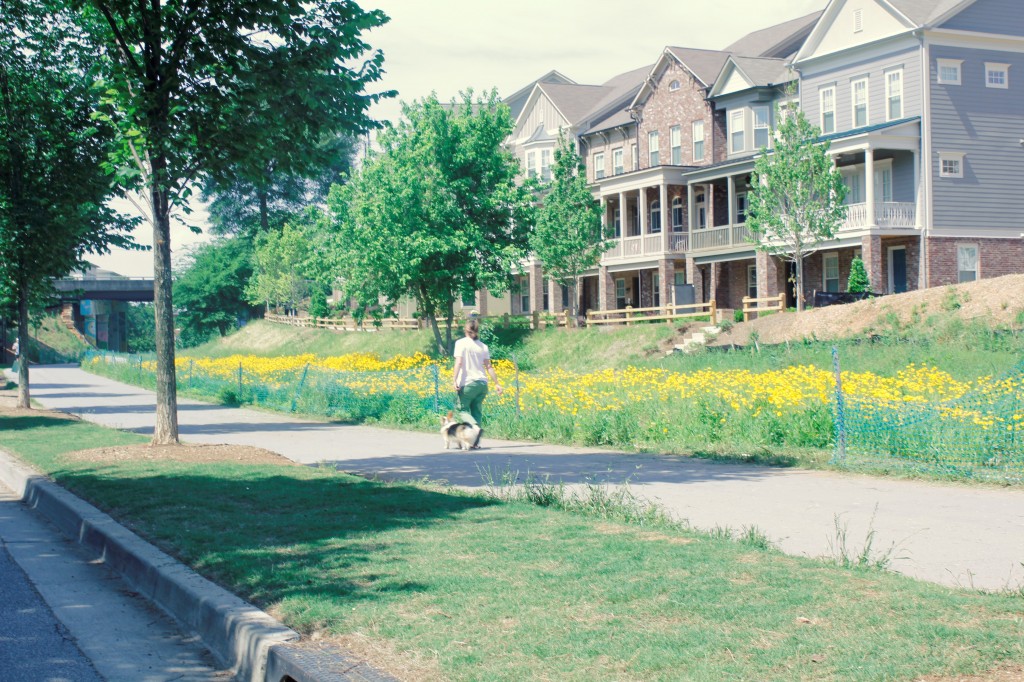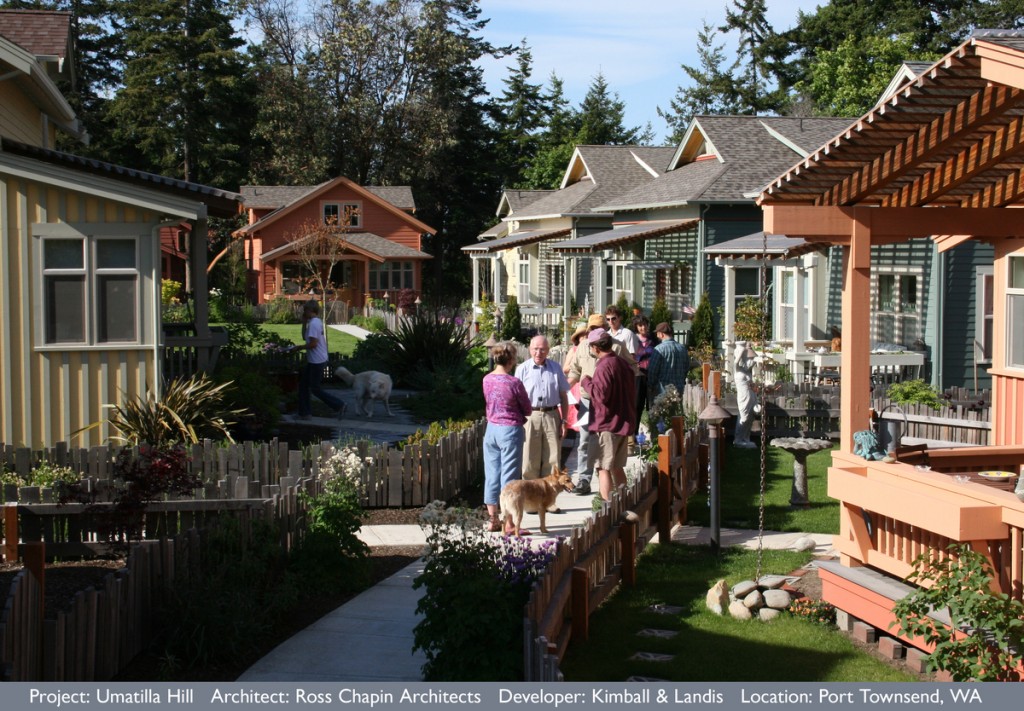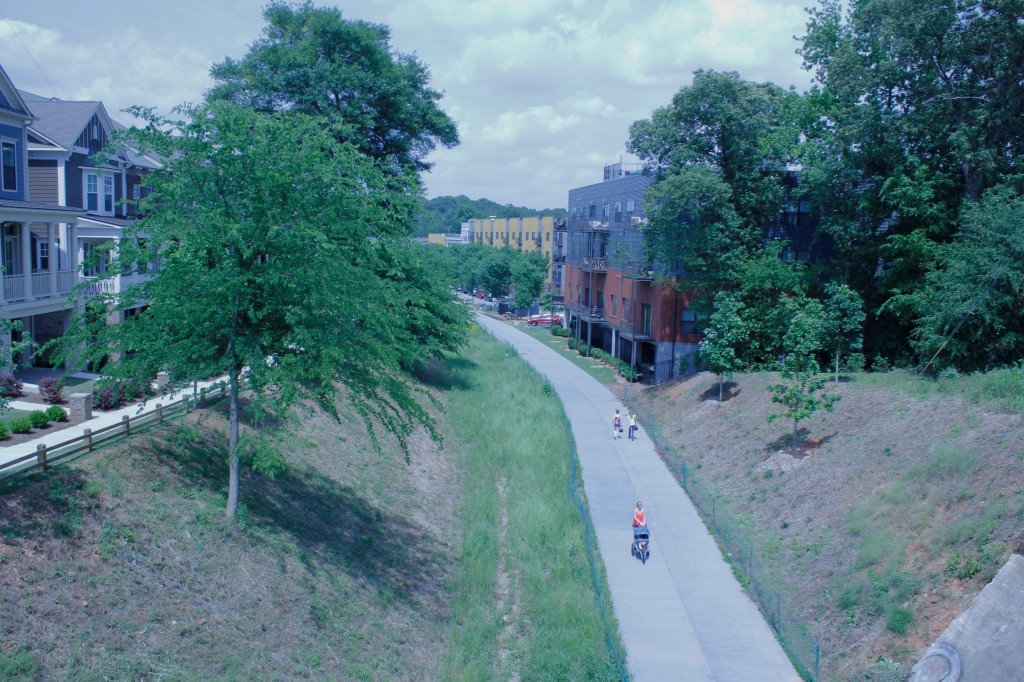Here’s some keen insight into the obvious: folks want to live in neighborhoods that are walkable and near bike paths. This trend is so pervasive it could actually change the way new neighborhoods are planned and built.
Consider Highland Park on the BeltLine Eastside Trail. Demand for these homes has been astonishing, with bidding wars on every new home offered for sale. So prized is the site’s proximity to the BeltLine, the homes are being built facing the trail. This unique orientation of the homes represents a move towards New Pedestrianism, a more ecological and pedestrian-friendly urban design practice predicted to arise out of New Urbanism and Smart Growth ideologies. Here’s the way wikipedia describes it:
New Pedestrianism replaces front streets with tree-lined pedestrian lanes that form a linear park system that directly connects all homes and businesses to each other, as well as to parks, greenbelts, plazas, courtyards, water features, schools, recreation, and other amenities.
Sound familiar? That’s the BeltLine if you connect Pedestrian Villages to it that push the cars, streets, and parking to the perimeter of the property.
The documentary New Urban Cowboy,Toward a New Pedestrianism chronicles how Michael E. Arth, the father of NP, put his ideas about compact, walkable, mixed-use neighborhoods to the ultimate test in DeLand, FL. This visionary transformed an incredibly dilapidated, drug-infested, crime-ridden area known as Cracktown into a dreamy poster child for pedestrian villages now known as The Garden District.
There are more than a few opportunities to replicate Arth’s approach in the 45 historic neighborhoods and large post-industrial parcels that link to the BeltLine corridor.
We are planning on screening New Urban Cowboy in several local venues in the near future. Be sure to sign up in the box at the upper right or at the end of this post to stay in the loop on dates and times for these showings.
Meanwhile, a local pedestrian village is being planned in Clarkston, GA that will leverage some special zoning on a parcel of land immediately adjacent to the Stone Mountain Bike Path. This is a very popular trail for cyclists that extends east from the BeltLine Eastside Trail.
Clarkston’s Cottage Housing Development Code was inspired by the pocket neighborhoods that have been popping up the last few years in diverse locations like Washington State, Arkansas, and Mississippi. The CHD code allows for clusters of 4, 6, 8, or 12 cottage homes ranging from 600 – 1,000 square feet to be built around common green space with connecting pedestrian paths instead of traditional subdivision streets. Cars will be parked on the edges of the village.
If this lifestyle captures your fancy then you’ll want to be at the initial charette for the Clarkston Cottage Community being held Saturday, May 24th. Here go the workshop bullet points:
- Off-grid living
- Organic gardening and farming
- Common areas for neighbors coming together
- Developing a strong sense of place
- Exploring the business opportunities of being next to one of Atlanta’s most popular bike trails
- Discussing land development opportunities around the Cottage Housing Development ordinance, one of Metro Atlanta’s most unique land zoning codes allowing for pocket neighborhood developments
- Walking the site to speculate on cottage locations
- Visioning a signature architectural style
You can learn more about the workshop here.
I’ve been fond of describing the BeltLine as an upgrade to the city of Atlanta. New Pedestrianism is an upgrade to New Urbanism and Smart Growth that puts even greater emphasis on planning communities around people instead of their cars. What are other areas around the BeltLine that are ripe for connecting pedestrian villages? Please comment below…
Top and bottom images by April Sisco









 ©2021 BeltLandia. All information provided is deemed reliable but is not guaranteed and should be independently verified. Properties subject to prior sale or rental.
©2021 BeltLandia. All information provided is deemed reliable but is not guaranteed and should be independently verified. Properties subject to prior sale or rental.
Speak Your Mind